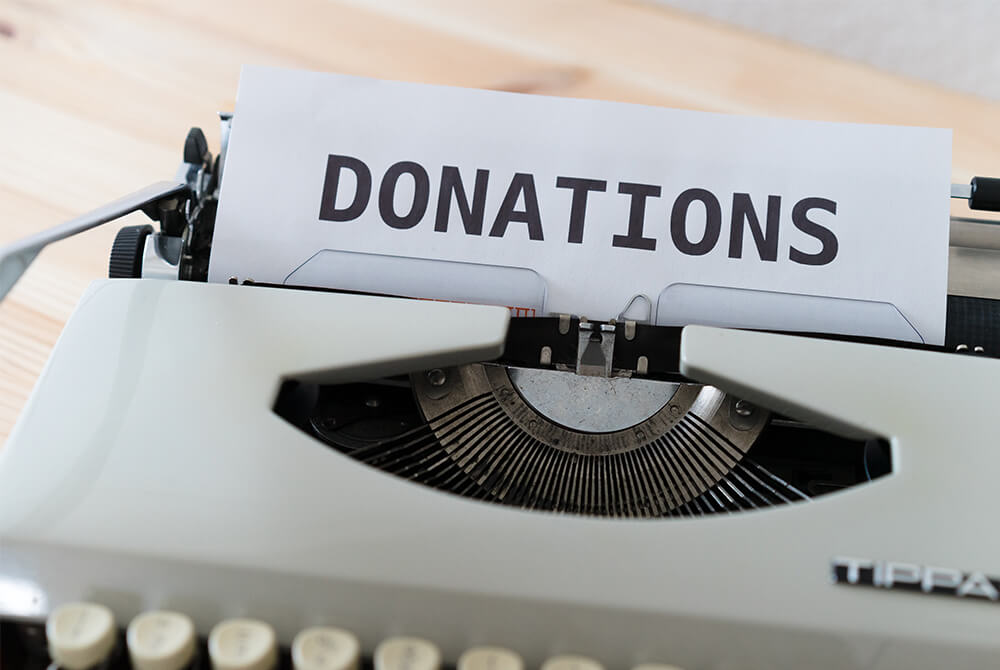
3 Secrets for Planned Giving and Improving It
If you’re here, then you’ve probably come to realize that having a planned giving program isn’t the same as having a successful planned giving program. It’s okay! In fact, you’re probably here because you don’t just want a successful program, you also want actual authentic donor relationships, too. After all, that’s why you got into non-profit work to begin with, right? That’s why DonorWERX did!
If you’re struggling with creating those authentic, meaningful connections, these three secrets to planned giving can help you improve those relationships and grow your program at the same time.

It’s All About How You Talk to Them
It’s Psychology 101, really. If you’re using a lot of “we have” or “we’ve done” statements, you’re likely going about things the wrong way.
Review your current marketing materials. Of course, you want to highlight your organization’s accomplishments, where it’s come from, and where you see it headed – but you don’t want to do this without the viewpoint of donors included.
For instance, imagine that with all of the donations you received last year, you were able to build a new clinic in an impoverished community. That’s great! So, you put together a brochure detailing these accomplishments with the words:
“Look what we did!”
But that statement doesn’t take into account that donors helped you do what you did. Instead, consider something like:
“Look what you helped us achieve!”
In all marketing, there are different demographics and segments. You’ll likely not be able to use the same marketing materials for new, young families as you do for those approaching retirement. Segment your donors by demographics such as age and engagement – speak directly to the donor’s values. Additionally, remember that each demographic likely receives this information differently – younger members most likely read your digital newsletter and emails, whereas your older members probably read your physical mailings or get their information from events you hold onsite. Are most of your congregation members of the younger generation? Need help crafting just the right message for your donors and prospects? DonorWERX can help.
All this means is that you need to update your marketing materials a little. These are quick fixes, and they cost you little to no money at all:
- Put planned giving messaging in all digital communications
- Add planned giving messaging to all physical materials you’re about to revamp
- Piggyback on events already on your organization’s calendar rather than planning new events
IMAGE https://unsplash.com/photos/bBNabN9R_ac
Lead Your Donors to Planned Giving
It’s been said, you can lead a horse to water, but…
The same can be said of your donors in a sense. You can add all the planned giving messaging you want to, and to every single spot you’ve got available – but if you don’t show your donors what they should do with the information, it’ll fall flat. You can’t just assume they’ll know – in fact, many might not even know what planned giving is!
All gifting vehicles bestow a certain sense of confusion. Prospects might wonder if they’ll need legal advice or how to even begin the process. With so many questions rolling through their minds, they may just dismiss the message and not make a donation. Make it easy on your members, and respect their time. DonorWERX can provide you with the assistance you need to help your donors help you.
A better means of engagement is to hold their hand through the entire process. These are just a few of the ways you can lead your donors through the planned giving process:
- Show them case studies or stories of previous planned giving donors
- Provide tools or other assistance that helps them with gift closing
- Give supportive educational materials
- Make contacting your organization as easy as possible
- Provide several methods of donation
- Follow up
Recognize Your Donors – Not Their Gifts
If you’ve ever received a rather impressive planned gift, it can be a monumental moment. You might want to immediately shout it from the rooftops – but wait. While that feeling is certainly understandable, it’s a mistake.
Singing the praises of the gift forgets the person who gave it and – most importantly – the reason they gave it. You might think your donors want their giving publicized, but at the very heart of the giving is the reason behind their gift. The amount or the way in which they provided it doesn’t need to be shared, unless the giver wants you to.
With an impressive gift comes a story. A story about a person, their family, and the larger community they’re a part of. The best rule of thumb when sharing large gifts is to recognize your donor and honor them the way they wish to be – and asking them how they want to be honored is a good thing! Make your recognition methods unique, and your organization will not only flourish, but you’ll capture and retain many more donors in the future.


